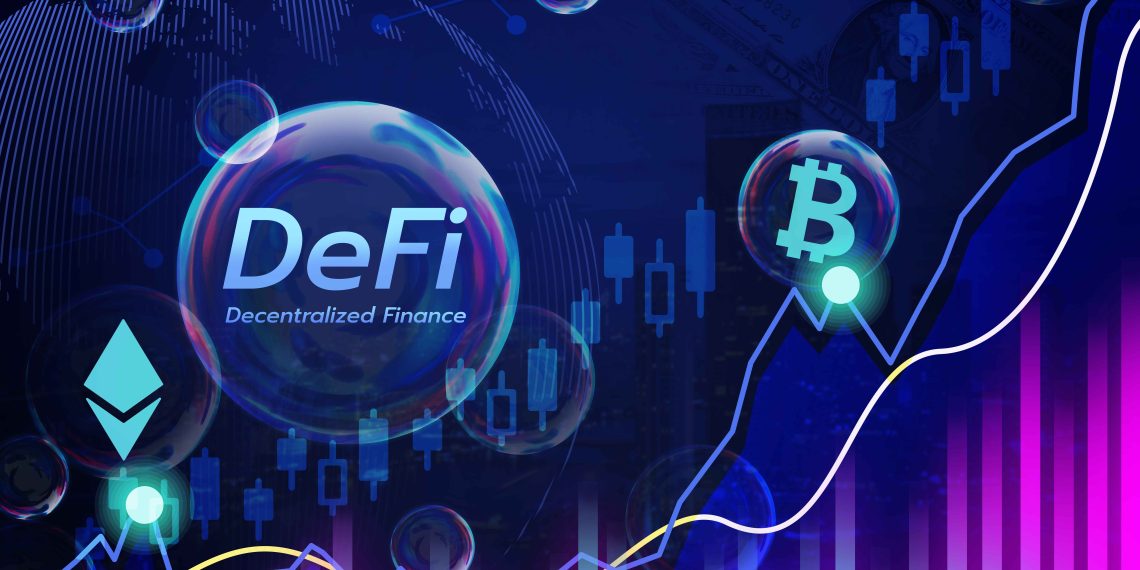The decentralized finance (DeFi) market, despite its name, has a centralization problem. Liquidity on decentralized exchanges (DEXs) is becoming increasingly concentrated in the hands of a few large providers, undermining the very concept of decentralization. According to a recent Bank for International Settlements (BIS) report, liquidity in the DeFi space is controlled primarily by institutional players, reducing the market’s democratization and posing challenges for smaller, retail liquidity providers (LPs).
Key Findings from BIS Report
- Concentration of Liquidity: The BIS study analyzed Ethereum’s blockchain and the top 250 liquidity pools on Uniswap V3. The findings showed that a small group of sophisticated participants controls about 80% of the total value locked (TVL) in these pools. This concentration limits the earning potential for retail LPs, who often lose money on a risk-adjusted basis.
- Returns Disparity: Institutional LPs, with better resources and market strategies, earn significantly higher returns than retail investors. While retail investors tend to experience lower investment returns and a smaller share of trading fees, institutional players enjoy more favorable conditions, often focusing on pools with high trading volume and lower volatility.
Reasons Behind Centralization in DeFi
- Sophisticated Market Participants: The BIS report attributes the centralization to sophisticated players who actively manage their positions, placing orders closer to the market price, much like traditional market makers. These players contribute between 65-85% of liquidity in the DeFi market.
- Retail Providers at a Disadvantage: Retail LPs typically interact with fewer liquidity pools, manage their positions less actively, and therefore receive a smaller share of the trading fees—only 10-25%. This creates a significant imbalance in the DeFi market, where a few large players dominate.
- Increased Competition in the DeFi Space: While retail LPs are often at a disadvantage, institutional players adapt better to market volatility, anticipating risks more effectively and securing better profits, especially during periods of high market fluctuations.
DeFi’s Centralization vs. Traditional Finance
- Traditional Finance Comparison: Economist Gordon Liao noted that liquidity control in traditional finance is even more concentrated than in DeFi, with large players dominating the market. However, the DeFi market still shows fewer barriers, both regulatory and operational, which could allow more inclusive participation if decentralized systems evolve.
- Centralization Traits in DeFi: BIS analysts suggest that economic forces promoting centralization in DeFi might be inherited from traditional finance. Despite decentralization being a core promise of DeFi, it is becoming clear that economic incentives favor large liquidity providers and institutional players over individual, retail participants.
The Question of True Decentralization in DeFi
In 2021, Gary Gensler, Chairman of the U.S. Securities and Exchange Commission (SEC), questioned the true decentralization of DeFi. Gensler pointed out that while DeFi platforms might be decentralized in certain aspects, they are often highly centralized in others, particularly in the way they incentivize participants with tokens. He even compared some DeFi projects to peer-to-peer lending platforms, which could fall under traditional financial regulations.
Can the Centralization Problem Be Solved?
The growing centralization in DeFi raises important questions about whether true democratization of liquidity is achievable in decentralized systems. The concentration of liquidity in a few large providers contradicts the goal of DeFi to offer decentralized and accessible financial services to all.
To address these issues, DeFi platforms must consider:
- Better Incentive Structures: Developing reward mechanisms that encourage retail LPs to participate more actively and equitably.
- Improved Liquidity Solutions: Encouraging more diversified participation in liquidity pools through enhanced protocols and governance.
- Further Research: Continued exploration into the roles of institutional and retail participants could offer insights into creating a more inclusive and sustainable decentralized financial ecosystem.
The DeFi market is facing growing centralization, with a few large players controlling the majority of liquidity. While some of this centralization is inevitable due to economic forces, it poses a challenge to the core principles of DeFi, such as decentralization and democratized access to financial opportunities. The future of DeFi will depend on how these challenges are addressed, and whether the market can evolve into a truly decentralized, sustainable, and inclusive ecosystem.





















